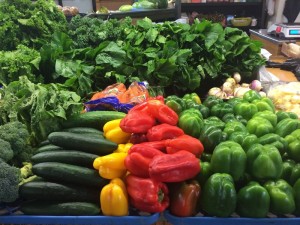Leventhal, Tama, and Jeanne Brooks-Gunn. “The neighborhoods they live in: the effects of neighborhood residence on child and adolescent outcomes.” Psychological bulletin 126.2 (2000): 309. Last accessed February 4, 2016. http://www.gxe2010.org/Speakers/pubs/Brooks-Gunn_2000a.pdf
While I was visiting the Edgewood Community Learning Garden, I arrived at the time when the elementary students were just dismissed from school. A small group of students walking home from school were curious about what I was doing and joined me in the Garden. During my conversation with them, I became curious about studies that were done about how children are affected by living in poor neighborhoods, living near a public park, or living in an area that has undergone gentrification which is evident in the Edgewood neighborhood. This article explores a little of that by explaining that “youth who moved to the more affluent suburbs were more likely to stay in school, to be in college preparatory classes, and to go on to college than their peers who remained in the city” (Leventhal, Tama, Brooks-Gunn). I believe statistics like these are known by the general public, but I would like to explore why this happens. They mention that families living in poverty tend to have only one parent present and while that parent is at work, the children do not have sufficient instructive care. If I can find enough information in conjunction with this article, I would like to explore how the way these children grow up affects the future of urban neighborhoods. If I can develop a broad idea of this, I may be able to find correlations to the Garden and the neighborhood surrounding it.



